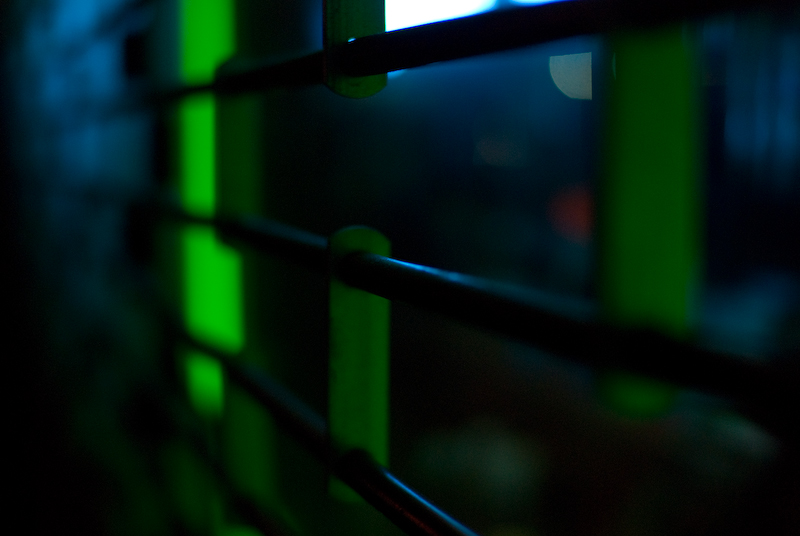|
|
LITR
5831 World / Multicultural Literature: |
|
Jessica Myers
07/09/2016
Resurrecting the American Dream
Despite being placed in internment camps, the Nisei remained loyal to America.
One man who lied about his age in order to enlist in the 442d Combat
Team during World War II explained his reasoning to his daughter by stating, “In
any other country in the world, I would have died [from TB], but the health care
in this country allowed me to live. And yes, there are many injustices, and yes,
there is racism, and yes, there are all these things, but this is my country and
it’s your country” (Takezawa 183). This mentality allowed Japanese Americans to
accept the internment camps as part of their experience in America. Once they
were released, they began to rebuild their lives while still facing racial
prejudices. It wasn’t until much later that the “Civil
Liberties Act of 1988, which provided a presidential apology and
$20,000 payments to surviving former detainees” was passed (“Righting a Wrong”).
Why did it take over forty years for Japanese Americans to seek redress for the
wrongs done against them? Since they had been silent for so long, why did they
accept monetary compensation from the government? What purpose were they trying
to accomplish so many years later? Because Japanese Americans are a “model
minority,” it took a new generation of Japanese Americans to seek reparations in
an effort to demand an apology from American dominant culture and prevent other
immigrant groups from being treated in a similar fashion.
Unlike minority groups that resist assimilation because of past oppression from
the dominant culture, the Issei and Nisei did their best to assimilate to
American dominant culture. When they were released from the internment camps,
they were not allowed to return to their previous homes on the West Coast.
Japanese Americans formed communities “in cities such as
Chicago,
Denver, and
New
York. The WRA—and even President Roosevelt—believed that the
scattering of Japanese Americans around the country along with preventing the
re-formation of ethnic communities would lessen prejudice against them”
(“Japanese American Responses to Incarceration”). The Issei and Nisei did not
want to draw unwanted attention to themselves by protesting their treatment
after they had finally been released. Instead, they worked to reestablish family
businesses, and they sent their children to school. Although “the
Nisei generation reveal feelings of disillusionment, they also reveal a
surprising expansion of intellectual and professional horizons” (Jardins).
As
racial prejudices continued against Japanese Americans, they followed the
pattern of a model minority by assimilating through language, education, and
obedience to the law. They did not discuss what had happened to them because
they were ashamed of their treatment and because it was painful to talk with
their children about it. Also, their children did not ask them about their
experiences. Ironically, “the Nisei interpret the lack of questions about
internment as a sign of little interest in the issue, the Sansei [third
generation Japanese Americans] say that they refrained from asking questions out
of consideration for their parents” (Takezawa 157). As the Sansei got older and
became more educated, they learned about the Japanese Internment and began
asking more questions. Their outrage at their parents’ and grandparents’
treatment along with the Civil Rights Movement led to more social awareness and
a desire for redress.
Japanese Americans sought an apology from the American government and monetary
reimbursement to force the dominant culture to acknowledge that they had
trampled the rights of American citizens and were willing to pay the price for
the infringement of their parents’ and grandparents’ rights. The Japanese
American Citizens League (JACL) realized that this process of requesting and
receiving an apology from the American government would not happen overnight.
Therefore, “JACL formed coalitions with civil rights groups and others to seek
passage of legislation that would create a federal commission to examine the
government’s actions in 1942” (Tateishi). Not only did they join forces with
other civil rights groups, but they also had to make the public aware of what
had happened to Japanese Americans during World War II. They started by reaching
out to the news media and “[w]ithin six months, articles about the Japanese
American internment found their way into the major newspapers, and network
television aired stories locally and nationally” (Tateishi). Japanese Americans
used the influence of dominant culture to help them sway public opinion in their
favor. Since the Sansei had been well educated, they were strategically placed
within American society to influence a positive outcome.
They even had connections in Congress. The placement of Japanese
Americans in Congress and their “skill and influence … had much to do with the
success of this legislative campaign” (Tateishi). Assimilation helped Japanese
Americans to successfully obtain an apology from the government and monetary
compensation for their suffering.
Originally, many Nisei and Sansei balked at receiving money from the government
because no price could be placed on the suffering of Japanese Americans.
However, “[t]he majority of Japanese Americans in the community . . . have
accepted the money as a symbol; it is the American way, they say, to sue and
claim monetary compensation for damage” (Takezawa 168). Even in the acceptance
of $20,000 for compensation, Japanese Americans are conforming to American
traditions. This is not an act of resistance typical of a minority group, but a
move towards becoming even more American. The apology and monetary compensation
created a shift for the Sansei; “[j]ust as feelings of guilt and shame were
passed on to the Sansei to some degree, redress has enhanced their ethnic pride”
(Takezawa 172). They no longer needed to feel ashamed of their past, but could
embrace it as part of their heritage. Redress has allowed them to identify even
more as Americans rather than a group that exists outside the dominant culture.
Redress has served a dual purpose because “it repairs their own psychological
damage and financial loss and it corrects an injustice and a violation of the
Constitution” (Takezawa 179). By acknowledging the breach of Constitutional
rights, the government is also accepting Japanese Americans into the fold of
dominant culture. The apology allows for better protection of future generations
from the same type of discrimination that Japanese Americans faced after the
bombing of Pearl Harbor.
Japanese Americans seek to make the general population aware of what happened to
their predecessors so that other immigrant groups will not have their rights
revoked because of a national crisis. During the process of seeking redress,
Japanese Americans have become “more aware of discrimination” (Takezawa 177).
They work to remind the dominant culture to not make judgements about a person’s
loyalty to their country based on their ethnicity or religious affiliations. By
“[k]eeping memories of the incarceration alive” Japanese Americans feel “both
the power and responsibility to speak out when other groups are unfairly
targeted because of their race, ethnicity, gender, sexuality, or other identity”
(“Why Does This Matter Now?”). As an immigrant group that has successfully
assimilated into dominant culture, Japanese Americans act as a “big brother”
figure for new immigrant groups. The fear of a group based on their ethnicity or
religion has returned with events such as the 9/11 attacks and more recent
terror attacks from ISIS. Unfortunately, “when threatened, imaginary enemies can
appear and we can easily discard our democratic ideals of justice and equality
to try to feel safer. Furthermore, false rumors—sensationalized and given
credence by a profit-maximizing media or vote-seeking politicians—can overwhelm
and contradict research and evidence-based analysis” (“Why Does This Matter
Now?”). Japanese Americans are utilizing negative life events to create a
powerful learning tool for other immigrant groups that come to America. They
have worked to remove the stigma of a “marked” immigrant group, yet at the same
time, they remember where they came from and take pride in their ethnicity as
Japanese Americans.
Japanese Americans represent a “model minority” who fought for the acknowledgement of wrongs done to them and by doing so truly assimilated into the dominant culture. Rather than resist the dominant culture, Japanese Americans took advantage of what America had to offer such as education, high paying jobs, and opportunities to pursue a better life. They utilized these opportunities to seek reparations for the horrors their parents and grandparents faced. Though their predecessors “felt betrayed by evacuation, abandoned in camp by their own government, insulted by the so-called loyalty questionnaires, and disappointed at the first meager appropriation, the Nisei always maintained their allegiance to the country” (Takezawa 183). This unfailing faith in the American ideal makes them exceptional, and their strength to hold the American government responsible for their blatant disregard of Constitutional rights makes them remarkable.
Works
Cited
“Japanese American Responses to Incarceration.”
Densho. Densho: The Japanese American
Legacy Project, 2016. Web. 6 July 2016.
Jardins, Julie Des. “From Citizen to Enemy: The Tragedy of Japanese Internment.”
History Now: The Journal of the Gilder
Lehrman Institute. The Gilder Lehrman Institute of American History, 2016.
Web. 6 July 2016.
“Righting a Wrong.”
Densho. Densho: The Japanese American
Legacy Project, 2016. Web. 6 July 2016.
Takezawa, Yasuko I. “Redefining the Past and the Present.”
Breaking the Silence: Redress and
Japanese American Ethnicity. Ithaca: Cornell University Press, 1995. 154-91.
Print.
Tateishi, John and William Yoshino. “The Japanese American Incarceration: The
Journey to Redress.” Redress Movement.
Japanese American Citizens League, 2016. Web. 05 July 2016.
“Why Does This Matter Now?” Densho. Densho: The Japanese American Legacy Project, 2016. Web. 6 July 2016.



